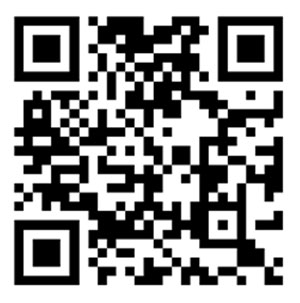TI: Preservation of Volvariella volvacea in culture through cryogenic storage.
AU: Chen-CheeJen; Chen-CJ
SO: Fungal-Science. 1999, 14: 3-4, 99-104; 16 ref.
LA: English
LS: Chinese
AB: Techniques for preservation of microbial cultures are vital in both basic and applied microbiology. This paper presents a cryopreservation method for the optimum maintenance of V. volvacea, a mushroom common in the tropics. In this study, a high post-cryogenic treatment viability is obtained with 5% dimethyl sulfoxide as the cryoprotectant employing a well-controlled cooling rate until a temperature reading of -80C was attained. The culture could be maintained in liquid nitrogen for more than four years.
PT: Journal-article
AN: 20023007701
TI: Flavor compounds in straw mushrooms Volvariella volvacea harvested at different stages of maturity.
AU: Mau-JengLeun; Chyau-CharngCherng; Li-JuhYiing; Tseng-YuHsiu; Mau-JL; Chyau-CC; Li-JY; Tseng-YH
SO: Journal-of-Agricultural-and-Food-Chemistry. 1997, 45: 12, 4726-4729; 18 ref.
LA: English
AB: V. volvacea fruiting bodies were harvested at different stages of maturity. Their volatile flavour compounds were identified as limonene, octa-1,5-dien-3-ol, 3-octanol, 1-octen-3-ol, 1-octanol, and 2-octen-1-ol; the major compound was 1-octen-3-ol, accounting for 71.6-83.1% of the total volatiles. Fruiting bodies contained high contents of trehalose (349.0-457.6 mg/g dry weight (DW)) and low contents of mannitol (0-25.5 mg/g). During development, the contents of total free amino acids and monosodium glutamate components, including aspartic and glutamic acids, increased from 36.11 and 11.20 mg/g DW at stage 1 to 60.18 and 26.21 mg/g at stage 5, respectively. Changes in glutamic acid were the most significant, increasing from 7.72 at stage 1 to 21 mg/g at stage 5. The content of total 5'-nucleotides and flavour 5'-nucleotides accumulated steadily with maturation. More flavour compounds, including both aroma and taste compounds, occurred in V. volvacea harvested at stages 4 and 5 (stipe elongated and cap opened).
PT: Journal-article
AN: 980303684
TI: Dehydration and steeping preservation of paddy straw mushroom (Volvariella volvacea).
AU: Alpana-Singh; Keshervani-GP; Gupta-OP; Singh-A
SO: Mushroom-Research. 1996, 5: 1, 39-41; 8 ref.
LA: English
AB: Processing technology for the paddy straw mushroom (V. volvacea) was developed based on a dehydration and steeping process. Dehydration was done with a through-flow drier. The optimum drying temperature, time and critical moisture content were found to be 60C, 7 h and 5% (wb), respectively. Blanched mushrooms steeped in 2.5% sodium chloride, 0.15% ascorbic acid, 0.3% citric acid, 0.15% sodium bicarbonate and 0.15% potassium metabisulphite had a longer shelf life (24 days) than blanched mushrooms steeped in 2.5% sodium chloride, 0.1% ascorbic acid, 0.2% citric acid, 0.1% sodium bicarbonate and 0.1% potassium metabisulphite (13 days). The dehydrated mushroom was rich in protein, fibre, and low in carbohydrate and fat.
PT: Journal-article
AN: 971403469
TI: Chemical constituents of a heat-dried Chinese mushroom, Hohenbuehelia serotina.
AU: Cao-RueiMin; Ma-Y; Mizuno-T; Cao-RM
SO: Bioscience,-Biotechnology-and-Biochemistry. 1996, 60: 4, 654-655; 6 ref.
LA: English
AB: The fruiting body of H. serotina (Huangmo, Dongmo or Yuanmo in Chinese) is edible and is used as a folk medicine for arthritis. It has also been studied for antitumour activity. The following compounds were isolated from the dried fruiting body: linoleic acid, hexadecanoic acid [palmitic acid], beta-sitosterol, benzoic acid, D-mannitol, sucrose and L-rhamnose. Six acidic compounds, ethyl linoleate, hexadecanoic acid and 9,12-octadecadienoic acid (Z-Z) ethyl esters were also identified.
GE: China-
PT: Journal-article
AN: 960308717
TI: Fungal biotechnology in Africa.
AU: Aidoo-KE
SO: African-Journal-of-Mycology-and-Biotechnology. 1994, 2: 2, 183-192; 7 ref.
LA: English
AB: The status of fungal biotechnology in developing countries is discussed with reference to fermented food and mushroom food production in Africa. Traditional fermented foods which play important roles in African diets are prepared mostly as solid-state spontaneous fermentations for which only a few species responsible have been identified. Attempts to improve and industrialise traditional fermented foods in Africa were aimed at the low and intermediate technology levels; however, they were of only limited success since most fermented foods are produced at the cottage or village scale. Despite mushroom cultivation being a major process for converting cellulosic wastes into useful foods only a few African countries cultivate the principal mushroom species (Agaricus bisporus, Volvariella volvacea, and Pleurotus sp. - the common white, straw and oyster mushroom). The production of these species is classed as intermediate level biotechnology and for many other African countries wild mushroom collection is still dominant. Four main areas were identified as research priorities if improvements in food production using fungal biotechnology in Africa are to be attained: improvement of the knowledge base (increased funding of basic research), improvements in technology (refining of the processes such as improved/novel fermenter designs), improvements in utilization of substrates, and the development of local capabilities (improved training of African students in biotechnology related skills).
GE: Africa-
PT: Journal-article
AN: 961300096
TI: Feeding value of spent mushroom (Volvariella volvacea Bull.) substrate-based diet in sheep.
AU: Sevilla,-CC; Mojica,-RE; Quimio,-TH
SO: Recent advances in animal nutrition in Australia 1989 [edited by Farrell, D. J.]. 1989, 22A; 2 ref. Armidale, Australia; Department of Biochemistry, Microbiology and Nutrition, University of New England.
LA: English
AB: Volvariella volvacea grown on rice straw or banana leaves did not improve the chemical value of the roughages, probably because the fungus could not fully degrade the lignocellulose component of the roughages.
PT: Unnumbered-Part
AN: N220874
TI: Nutritional evaluation of dehydrated mushrooms.
AU: Verma,-A; Kesherwani,-GP; Sharma,-YK; Keshwal,-RL; Pratibha-Singh
SO: Indian-Journal-of-Nutrition-and-Dietetics. 1987, 24: 12, 380-384; 7 ref.
LA: English
AB: Full fruit of the mushroom Agaricus bisporus (dried in an oven at 60??10C for 12 h) had ash 11.3 to 11.5, protein 38.9 to 39.1, ether extract 3.0 to 3.2, crude fibre 7.9 to 8.2 and total carbohydrate 17.0 to 20.0% depending on cap diameter. Correspnding values for Volvariella volvacea were 12.6, 42.0, 0.3, 3.5 and 11.3% and for Pleurotus sajor-caju 9.8 to 10.4, 28.8 to 48.4, 1.2 to 3.6, 7.9 to 9.7 and 15.9 to 25.0%. The cap of all varieties had greater amounts of nutrients than had the stipe.
PT: Numbered-Part
AN: N140609
TI: The current status and prospects for the production and marketing of edible fungi in Taiwan.
AU: Shieh,-JN
SO: Taiwan-Agriculture-Bimonthly. 1988, 24: 3, 73-75.
LA: Chinese
AB: Various aspects of the production of edible fungi are briefly reviewed. The extent of cultivation and conditions for growth are discussed for various species including Pleurotus spp., Volvariella volvacea and Flammulina velutipes. Several general aspects of cultivation are considered including the effects of climate, substrate utilization, various types of fungi, yields and profitability. Data are given for the yields and for the value of the crops of some edible fungus species.
GE: Taiwan-
PT: Numbered-Part
AN: C917649
TI: Prospects for the cultivation of Volvariella volvacea in China.
AU: Chen,-YL
SO: Zhongguo-Shiyongjun-Edible-Fungi-of-China. 1988, No. 4, 11-12.
LA: Chinese
LS: English
AB: The present status of V. volvacea cultivation in China is discussed, together with recommendations and future prospects.
GE: China-; Guangdong-
PT: Numbered-Part
AN: C919951
TI: Studies on some mushroom mycelia as dietary components for laboratory animals.
AU: Chandra-A; Purkayastha-RP
SO: Indian-Journal-of-Experimental-Biology. 1976, 14: 1, 63-64; 7 ref.
LA: English
AB: Male Swiss mice 4 weeks old and weighing 17 to 19 g were given for 16 days a stock diet without or with dried mycelial powder, prepared from 5 different mushrooms, 25%. The mycelial protein was from 13.86 to 35.87% on a dry weight basis. There was no difference in bodyweight gain between control mice and those given mycelial powder of Agaricus campestris, Lentinus subnudus or Volvariella volvacea but gain was significantly greater for those given Calocybe indica or Termitomyces eurhizus. No abnormality was detected in external appearance or in internal organs at the end of the trial.
PT: Journal-article
AN: 761445371
TI: Vegetables.
CA: Mauritius, Ministry of Agriculture and Natural Resources and the Environment.
SO: Mauritius,-Ministry-of-Agriculture-and-Natural-Resources-and-the-Environment:-Annual-report-for-the-year-1977. 1979, 237 pp.
PB: Port Louis.; Mauritius
LA: English
AB: Beans (Phaseolus vulgaris): Spacing X N fertilizer trial. Garlic: Variety, spacing and planting date trials. Mushrooms: Trials with Volvariella volvacea. Okra: Spacing X N fertilizer trial. Tomatoes: Variety trial; and the response to different cultural treatments and to irrigation. General: Variety trials with cucumbers, onions and squash.
GE: Mauritius-
PT: Annual-report
AN: 810392677
TI: Vegetables.
CA: Sarawak, Department of Agriculture, Research Branch.
SO: Sarawak,-Department-of-Agriculture,-Research-Branch:-Annual-report-for-1976. undated, 335 pp.
PB: Kuching.; Sarawak
LA: English
AB: Heading cabbage, Chinese cabbage, cucumber, onion, cauliflower, tomato and mushroom (Volvariella volvacea and Auricularia auricula) cultivation.
GE: Sarawak-
PT: Annual-report
AN: 790379529
TI: Vegetables.
CA: Sarawak, Department of Agriculture, Research Branch.
SO: Sarawak,-Department-of-Agriculture,-Research-Branch:-Annual-report-for-1977. undated, 257 pp.
PB: Kuching.; Sarawak
LA: English
AB: Brassicas: Cabbage, cauliflower and Chinese cabbage variety trials; and growing cabbages and cauliflowers under polyethylene. Onions: Variety trials. Edible fungi: Cultural trials of Volvariella volvacea, Pleurotus ostreatus and Auricularia auricula.
GE: Sarawak-
PT: Annual-report
AN: 800384545
TI: Mushroom industry: persification with additional species in the United States.
AU: Farr-DF
SO: Mycologia. 1983, 75: 2, 351-360; 6 pl.; 38 ref.
LA: English
AB: A brief review of edible fungi, in addition to Agaricus bisporus, is presented. Information on growing Volvariella volvacea and Stropharia rugoso-annulata (usually on straw) and Lentinus edodes, Flammulina velutipes, Pholiota nameko, Tremella fuciformis and Auricularia sp. (on wood, sawdust or wood chips) is given. The advantages of growing species other than A. bisporus are discussed.
GE: USA-
PT: Journal-article
AN: 830314331
TI: Effect of polyethylene wrapping on the inhibition of the opening of the paddy straw mushroom (Volvariella volvacea).
OT: Pengaruh cara-cara pembungkusan dengan polyethylene untuk penghambat mekarnya jamur merang.
AU: Sjaifullah
SO: Buletin-Penelitian-Hortikultura. 1980, 8: 11, 23-35; 4 ref.
LA: Indonesian
LS: English
AB: The highest quality mushrooms are those with the volva still intact (egg stage). In trials involving transport, activated carbon was a better absorbent than a saturated aqueous potassium permanganate solution in preventing opening. Up to about 24 h after harvesting, polyethylene bags perforated at the base only prevented opening better than polyethylene bags perforated all over. During maturation mushroom carbohydrate and fat contents increased whereas protein content decreased.
GE: Indonesia-
PT: Journal-article
AN: 830316930
TI: Spent paddy straw as a basal roughage for sheep.
AU: Ahuja,-AK; Kakkar,-VK; Garcha,-HS; Makkar,-GS
SO: Indian-Journal-of-Animal-Sciences. 1986, 56: 2, 285-287; 5 ref.
LA: English
AB: In a switchover design study 8 male sheep, about 15 months old and weight 50 kg, were given daily for 1 month concentrate mixture 0.5, green fodder 3 and spent paddy straw (protein 6.0%) after growth of mushrooms, Volvariella volvacea, or wheat straw 0.5 kg. There were no significant differences between groups in weight gains, DM intakes and DM digestibility. The spent paddy straw could serve as roughage for sheep.
PT: Numbered-Part
AN: N840694
TI: Effects of heat treatment and storage temperature on the biogenic amine contents of straw mushroom (Volvariella volvacea).
AU: Yen-GC
SO: Journal-of-the-Science-of-Food-and-Agriculture. 1992, 58: 1, 59-61; 10 ref.
LA: English
AB: Changes in the concentrations of biogenic amines (tryptamine, 2-phenylethylamine, putrescine, cadaverine, histamine and tyramine) of straw mushrooms produced by heat treatment (boiling for 5 min) and storage (up to 5 days' storage at 4 or 25C) were studied. About 80% of the original content of these amines was lost during cooking. Commercial canned straw mushrooms contained low amounts of amines. The amine concentrations of straw mushrooms increased during storage at 4? particularly the concentrations of 2-phenylethylamine and tyramine. However, the concentrations of all amines increased more markedly during storage at 25?than during storage at 4? increases in the putrescine and cadaverine concentrations, particularly, were much greater at 25?than at 4?
PT: Journal-article
AN: 940301388



























